Cucurbit beetles are common pests that affect crop growth and productivity. Learn how to effectively prevent it!
Squash bugs are a common pest faced by growers of cucurbit crops such as gourds and melons. These insects not only hinder plant development but can also significantly reduce harvest yields. In this article, Sataka explores the issue in depth to provide farmers with the most effective solutions.
Squash bugs belong to the Corythucha family and are prevalent pests for cucurbit crops. Measuring just 2–5 mm in size, these insects primarily feed on plant sap, weakening the plants and severely affecting productivity.
Squash bugs are easily recognizable with their flat bodies and colors ranging from pale green to dark brown, blending well with plant foliage. Their rounded heads and large eyes help them detect predators.
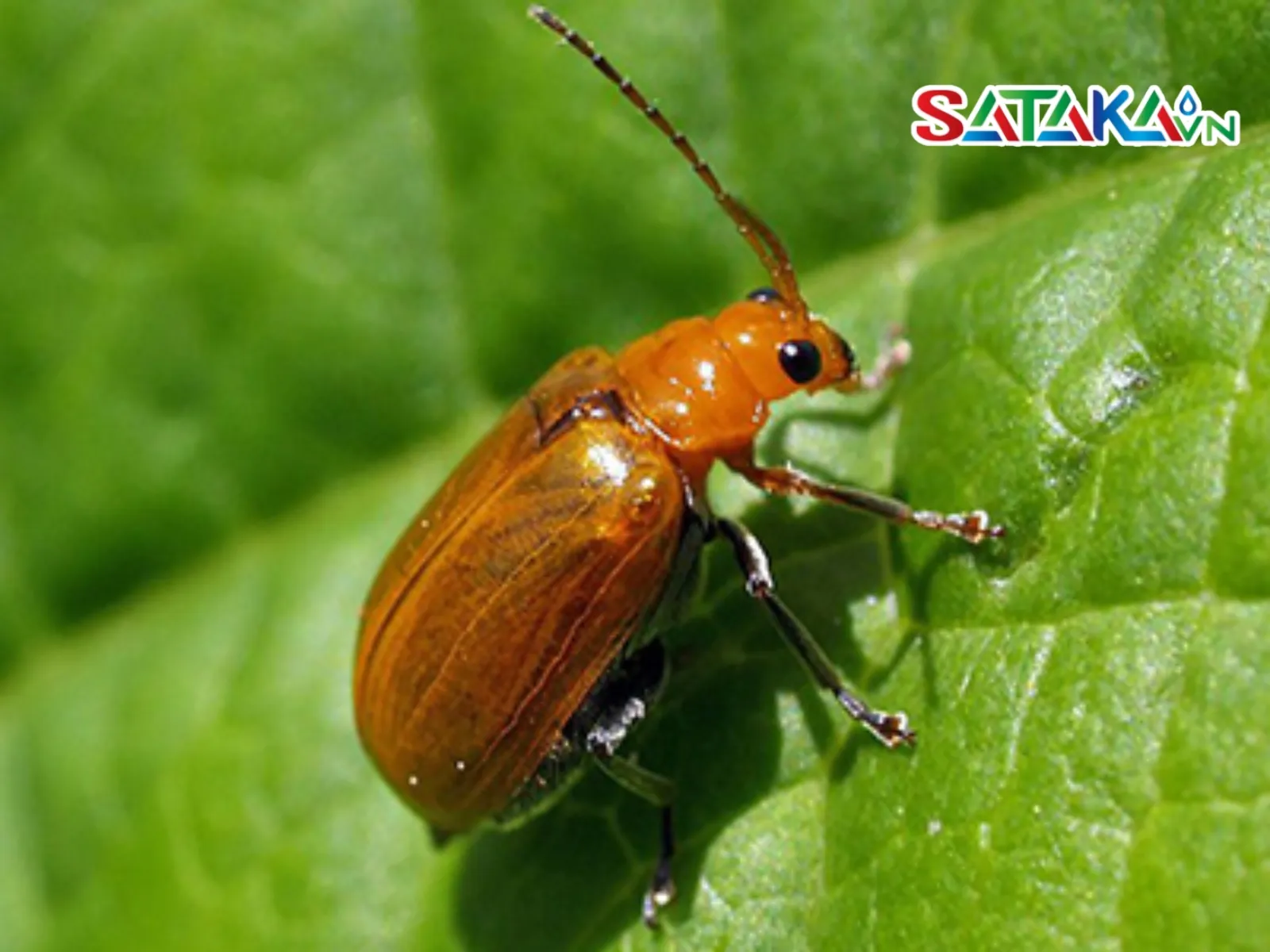
Learn about melon beetles that damage cucurbits
Biologically, squash bugs reproduce prolifically in spring and summer when the weather is warm. Females lay between 100 to 300 eggs on the undersides of leaves. Eggs hatch within 7–10 days into larvae, which develop over 3–4 weeks. During this time, they continually feed on plant sap, causing significant damage to cucurbit crops.
Squash bugs cause aesthetic and physiological damage to plants, affecting their growth and productivity. The impact can be divided into two main stages: damage to seedlings and mature plants.
When squash bugs attack seedlings, the young plants can become defoliated and significantly weakened. In severe cases, seedlings may die entirely, jeopardizing the entire crop.
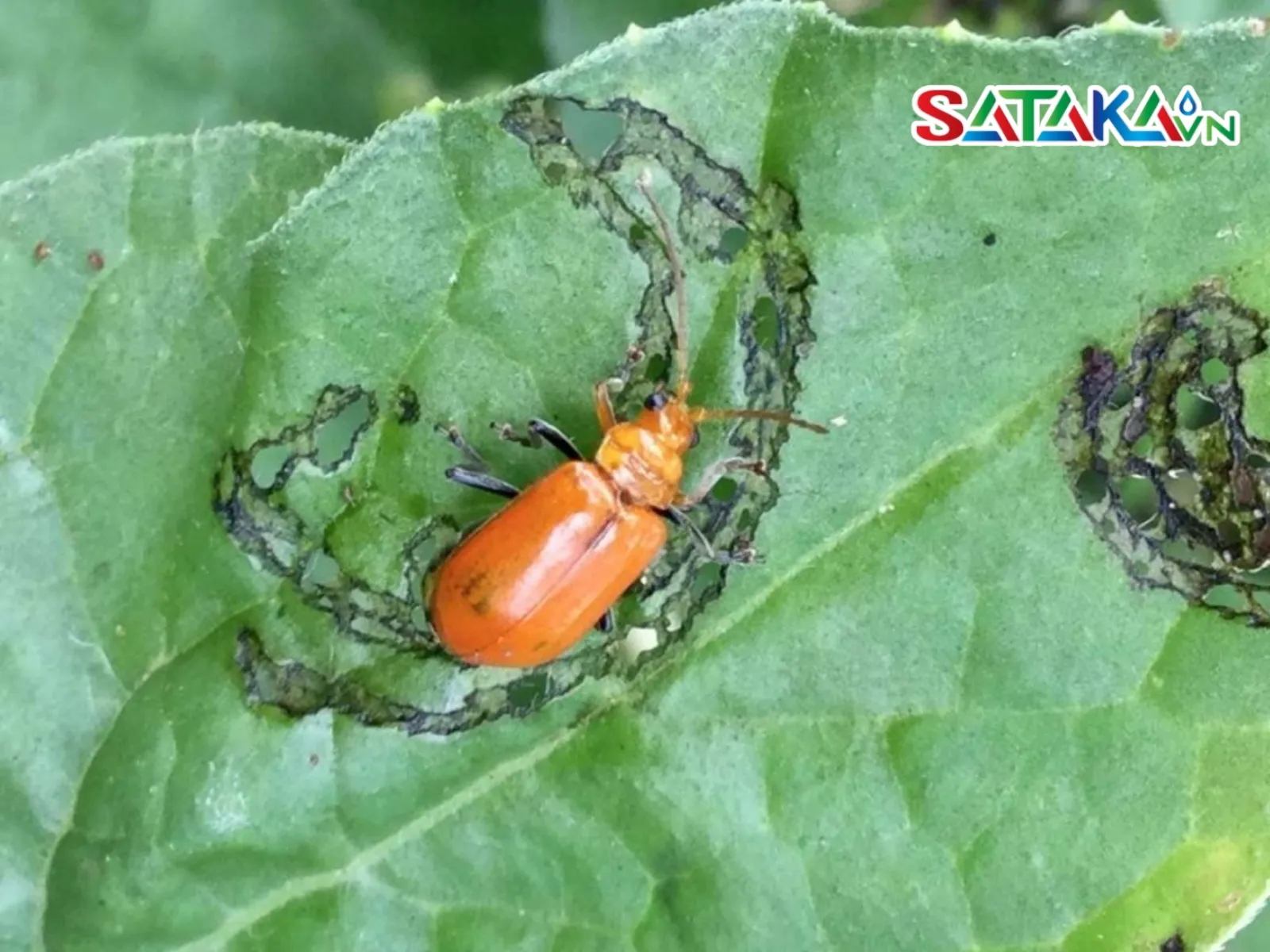
Harmful effects of melon beetles on squash
For mature plants, undetected and untreated squash bug infestations can lead to extensive damage to the plant's stems and roots. This often results in sudden plant death, causing substantial losses for farmers.
Early detection is key to controlling squash bugs effectively. Look out for the following signs:
Seedlings (under 20 days old):
Mature plants:
Recognizing these signs early allows farmers to implement timely control measures and protect their crops.
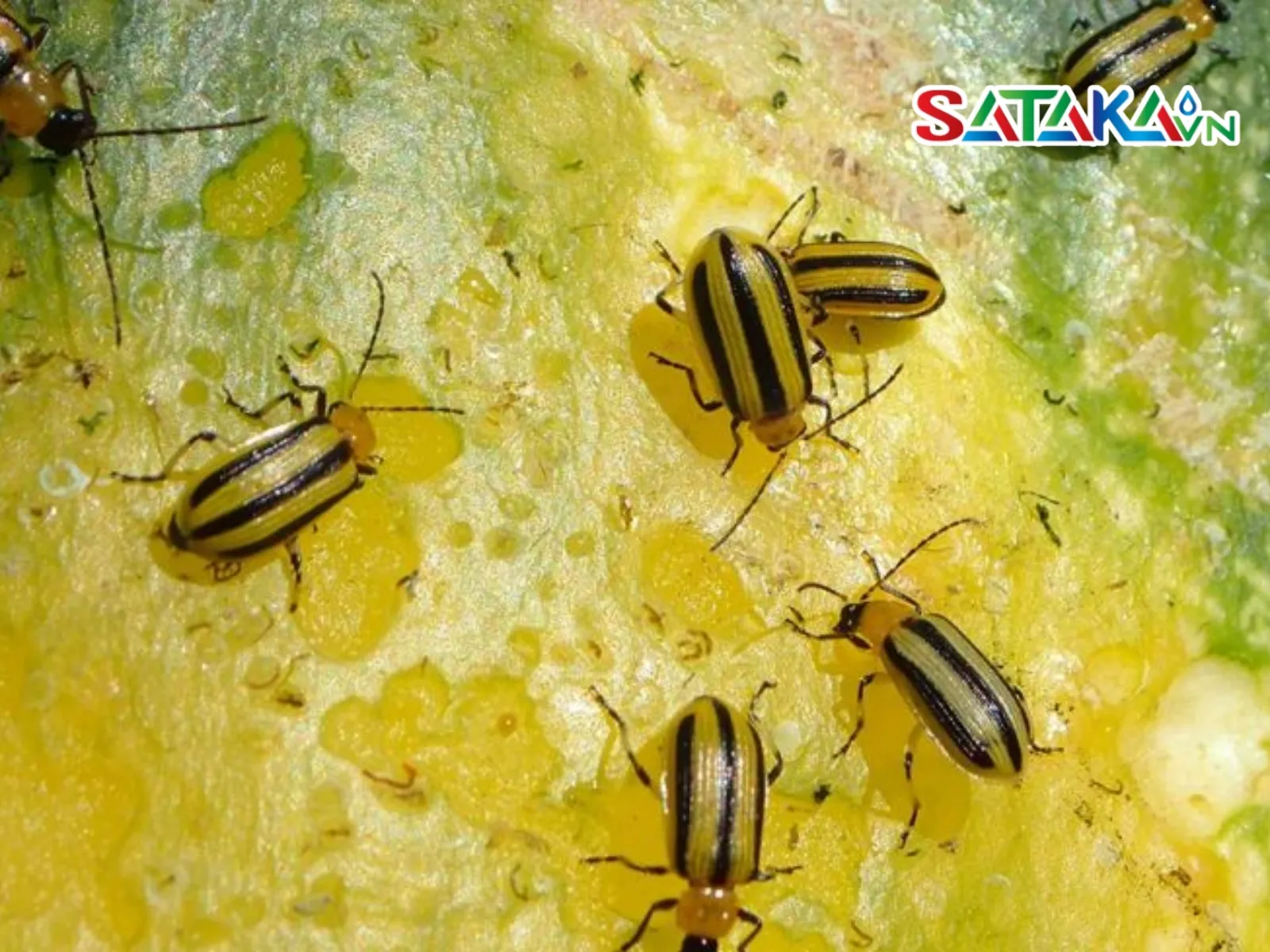
Signs of melon beetles appearing on cucurbit plants
Protecting cucurbit crops from squash bugs requires an integrated strategy combining cultural, biological, and chemical control methods. Below are actionable techniques:
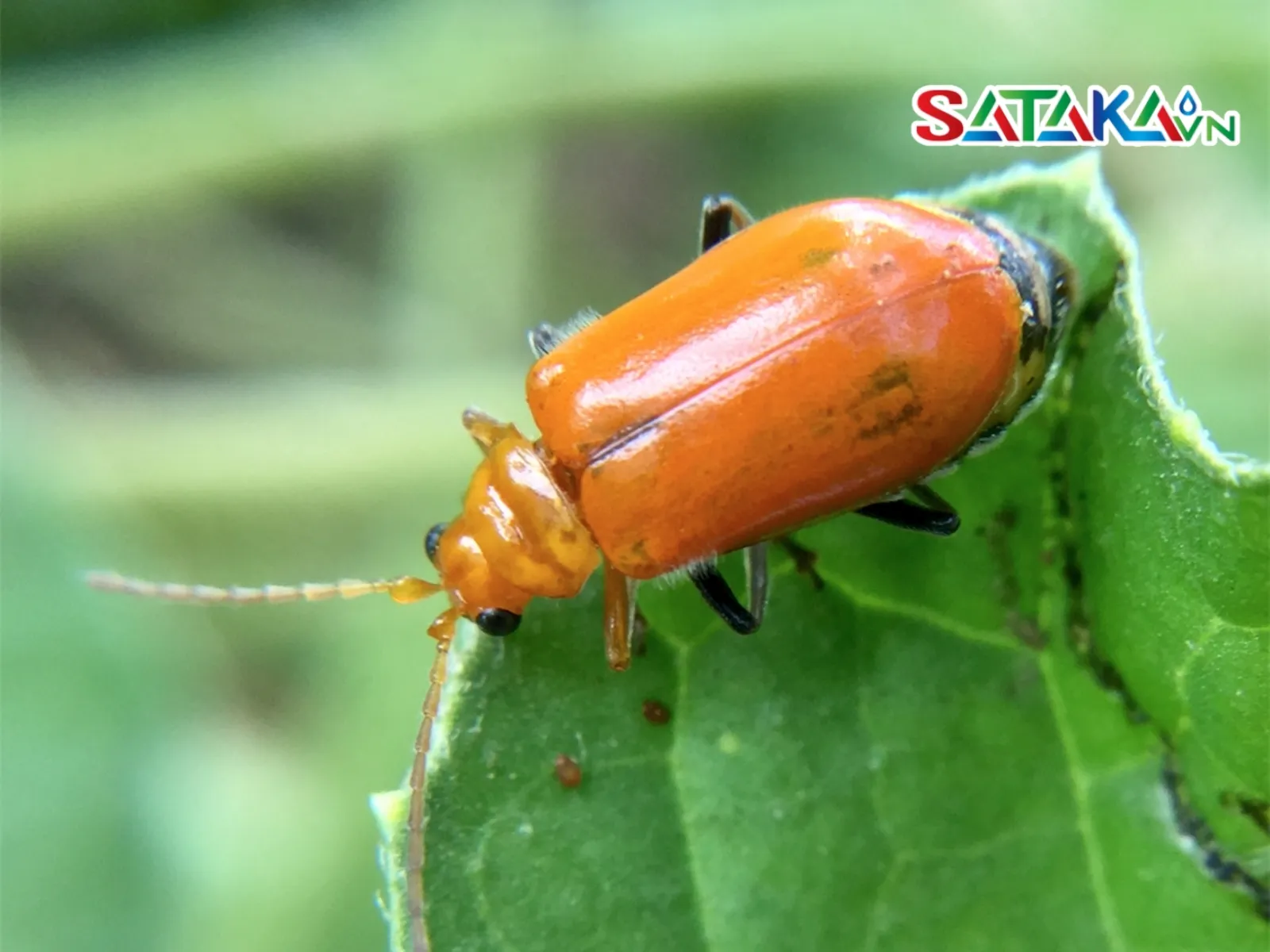
How to prevent melon beetles on cucurbit plants
1. At what stage do squash bugs attack cucurbit crops?
Squash bugs can attack at any stage, from seedlings to mature plants. However, seedlings (under 20 days old) are more vulnerable due to their tender leaves and lower resistance.
2. How can I identify squash bug damage?
Signs include circular feeding marks on leaves, stunted growth, and bored holes around the plant base with visible eggs and larvae.
3. What biological methods can control squash bugs?
Effective biological methods include using parasitic flies and natural predators to control pest populations without harming crops.
4. When is the best time to spray pesticides for squash bugs?
Spray pesticides in the early morning or late afternoon when squash bugs are most active. Cool weather improves pesticide effectiveness.
5. Can severely affected plants be saved from squash bugs?
Yes, but recovery depends on the damage severity. Remove damaged parts, provide sufficient nutrients and water, and apply protective pesticides promptly to support plant recovery.
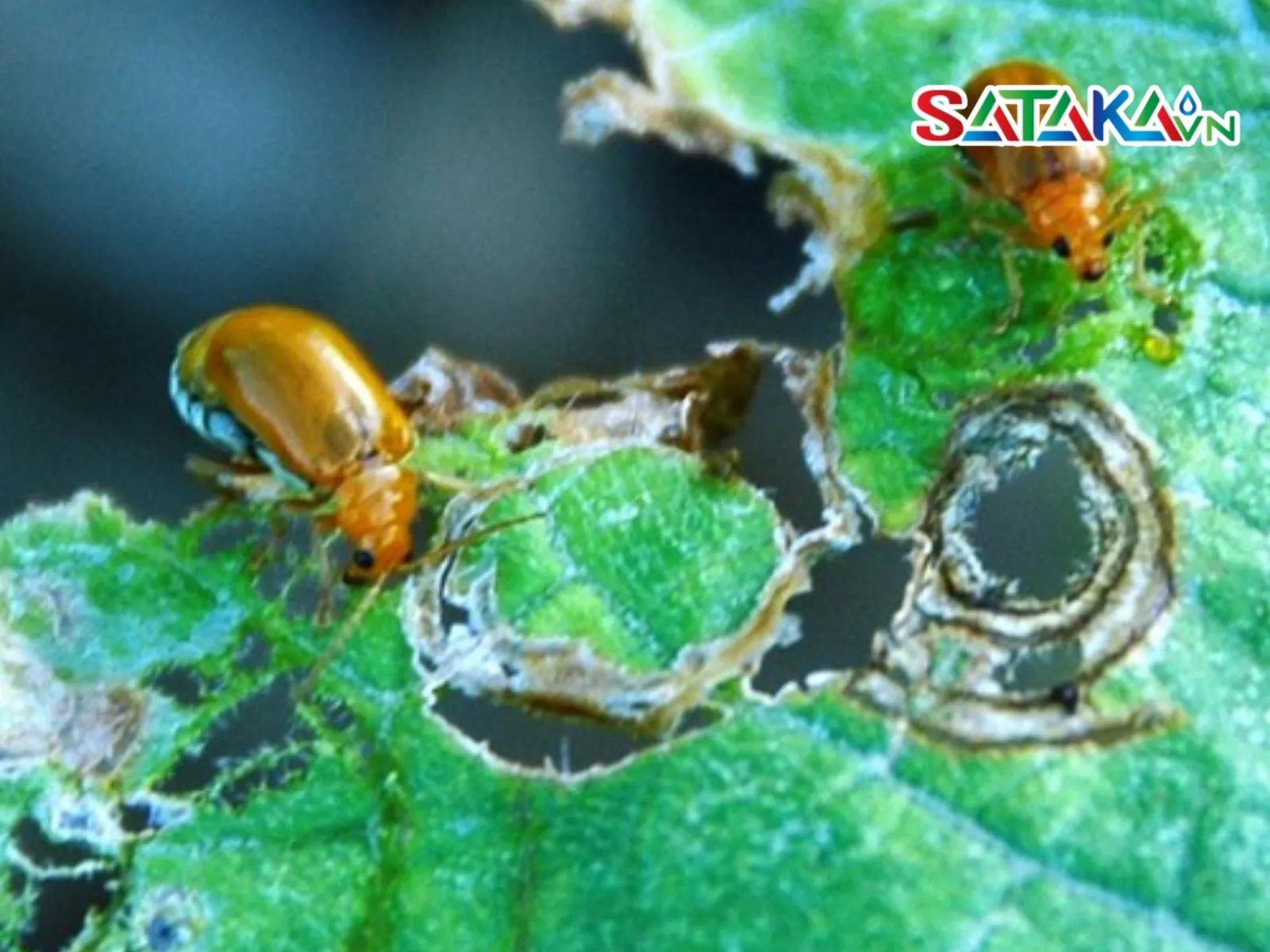
Melon beetles damage seedlings under 20 days old
Recognizing and addressing squash bug infestations promptly is essential to protecting crops and maintaining yields. Proper care and pest control after an attack are also critical. Sataka offers guidance and support to help you manage cucurbit crops effectively. For further assistance, feel free to contact Sataka!